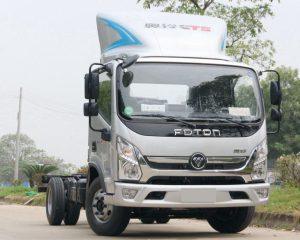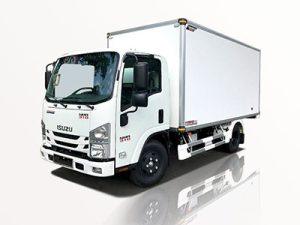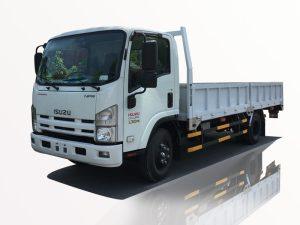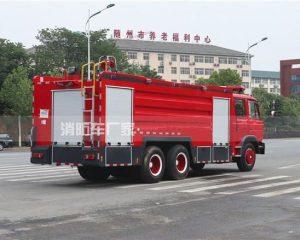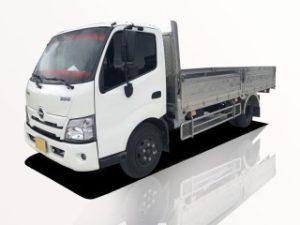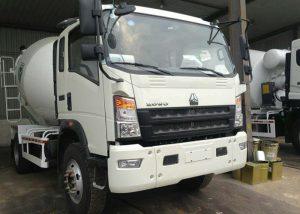Monday to Saturday - 8:00 -17:30
Understanding Trash Truck Weight: A Comprehensive Guide
Introduction
Trash trucks play a vital role in waste management and urban sanitation. The weight of these trucks is crucial not only for operational efficiency but also for compliance with regulatory standards. In this comprehensive article, we will delve into the various aspects of trash truck weight, including factors affecting weight, the importance of weight limits, and best practices for operators. Whether you’re a waste management professional, a city planner, or simply someone interested in the mechanics of garbage collection, this guide offers valuable insights.
What is the Average Weight of a Trash Truck?
The weight of a trash truck varies significantly based on its type, size, and payload capacity. On average, a standard garbage truck weighs between 25,000 to 30,000 pounds when empty. When fully loaded, this weight can increase to between 60,000 and 80,000 pounds. Let’s break this down further.
Types of Trash Trucks
Different types of trash trucks serve various purposes, and their weights reflect this:
- Rear-Loading Trucks: Typically weigh 25,000 to 30,000 pounds when empty, with a full weight of around 60,000 pounds.
- Front-Loading Trucks: Heavier than rear-loaders, these trucks often weigh around 30,000 pounds empty and 70,000 pounds loaded.
- Side-Loading Trucks: Similar in weight to rear-loaders, but with advanced mechanisms that can increase the total load.
- Compactor Trucks: Utilizing a compaction mechanism can add significant weight when full, bringing it to the higher end of the range.
Factors Affecting the Weight of Trash Trucks
The weight of a trash truck is influenced by several factors:
- Material Construction: Trucks built with lightweight materials may weigh less while still maintaining durability.
- Payload Capacity: The designed capacity of the truck determines how much waste it can carry, impacting the overall weight.
- Compaction Mechanisms: Trucks equipped with advanced compaction features can carry more weight within the same volume.
- Fuel Load: The amount of fuel in the tank contributes to the overall weight, slightly varying based on daily usage.
The Importance of Weight Limits
Understanding and adhering to weight limits is critical for safe and efficient waste collection.
Regulatory Standards
In many jurisdictions, there are stringent regulations governing the weight limits for trash trucks to ensure road safety and minimize damage to infrastructure. Exceeding these limits can lead to fines and operational delays.
Impact on Roads and Infrastructure
Heavy vehicles exert significant stress on roads and bridges. Proper weight management helps prolong the lifespan of infrastructure and reduces maintenance costs. For example, overweight trucks can cause cracks and potholes that require costly repairs.
Operational Efficiency
Understanding weight limits allows waste management companies to optimize their routes and schedules. Efficient route planning reduces fuel costs and manpower, making the entire operation more sustainable.
Practical Tips for Managing Trash Truck Weight
Operators and companies should implement several strategies to manage the weight of trash trucks effectively:
Regular Weight Checks
Conducting regular weight checks at certified weigh stations helps ensure compliance with weight limits. This practice can prevent fines and operational disruptions.
Calibrating Equipment
Ensure that compaction and loading equipment are calibrated correctly to avoid overloading the truck. Regular maintenance checks can help maintain optimal performance.
Training for Drivers
Providing drivers with training on weight management can lead to better decision-making in real-time situations. This can include understanding load distribution and being mindful of weight limits when picking up waste.
Communicating with Local Authorities
Establishing a good relationship with local transportation authorities can help operators stay informed about any changes in regulations or weight limits that may affect operations.
The Environmental Impact of Truck Weight
The weight of trash trucks also has significant environmental implications. Heavier trucks consume more fuel, increasing carbon emissions and negatively affecting air quality.
Fuel Efficiency
By optimizing truck loads and adhering to weight limits, waste management companies can enhance fuel efficiency, thereby reducing greenhouse gas emissions. For instance, companies can consolidate routes and schedules to minimize fuel consumption while maximizing load capacity.
Innovative Technologies
Investing in technologies such as GPS fleet management systems can help monitor truck loads and optimize routes, ultimately leading to lower emissions and a reduced carbon footprint.
Comparing Trash Truck Weights and Sizes
Understanding the differences in trash truck weights and sizes can help waste management companies make informed decisions when purchasing or leasing vehicles. Below is a comparison table illustrating various common truck sizes and their weights:
| Truck Type | Empty Weight (lbs) | Fully Loaded Weight (lbs) | Payload Capacity (lbs) |
|---|---|---|---|
| Rear-Loading Truck | 25,000 | 60,000 | 35,000 |
| Front-Loading Truck | 30,000 | 70,000 | 40,000 |
| Side-Loading Truck | 28,000 | 65,000 | 37,000 |
| Compactor Truck | 32,000 | 80,000 | 48,000 |
Real-World Examples
To illustrate the impact of truck weights on operations, consider the following examples:
City A: Effect of Overweight Trucks
City A faced significant issues with road damage due to overweight garbage trucks. After analyzing the data, the city instituted stricter weight enforcement, resulting in a 30% reduction in road maintenance costs over two years.
Company B: Efficiency through Compliance
Company B, a waste management provider, implemented a regular weight-checking protocol. As a result, they increased their fuel efficiency by 15% and reduced emissions by 20%, demonstrating the importance of adhering to proper weight guidelines.
Future Trends in Trash Truck Weight Management
The waste management industry is evolving with technological advancements focusing on efficiency and sustainability. Here are some future trends to watch:
Electric and Hybrid Trucks
The adoption of electric and hybrid garbage trucks promises to decrease the overall weight due to lighter battery systems, reducing carbon emissions and improving fuel efficiency.
Smart Truck Technologies
Smart technologies including weight sensors and onboard scales can provide real-time feedback to operators, allowing for better weight management and efficiency.
Integrating IoT in Waste Management
The Internet of Things (IoT) has the potential to revolutionize waste collection through data analytics, optimizing routes based on payload weights and road conditions, ultimately enhancing efficiency.
FAQ Section
What is the maximum weight limit for trash trucks?
The maximum weight limit for trash trucks varies by jurisdiction but typically falls within the 80,000-pound range for fully loaded trucks on the interstate in the U.S.
How can I find out the weight of my trash truck?
You can find out the weight of your trash truck by checking the manufacturer’s specifications or by taking it to a certified weigh station to get an accurate measurement.
Why do some trash trucks weigh less than others?
Some trash trucks weigh less due to lighter construction materials, smaller payload capacities, or design variations that prioritize efficiency and maneuverability.
What are the consequences of operating an overweight trash truck?
Operating an overweight trash truck can lead to legal penalties, increased maintenance costs due to road damage, and safety risks for the driver and the public.
How often should trash trucks be weighed?
It is advisable for trash trucks to be weighed regularly, particularly before critical operational periods or after major modifications to ensure compliance with weight regulations.
Can technology help manage trash truck weight?
Yes, new technologies like weight sensors and fleet management software can help operators monitor and manage the weight of trash trucks to ensure compliance and operational efficiency.




